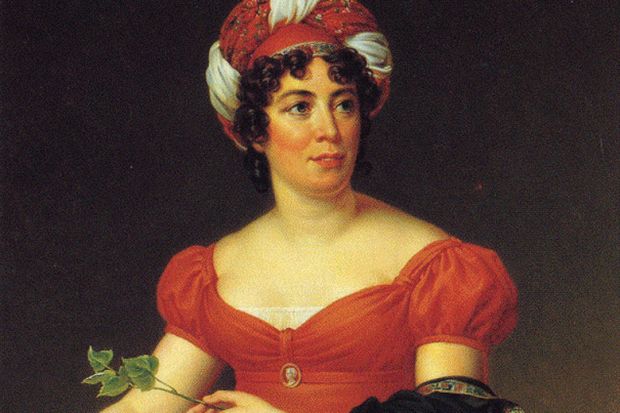A study of the political life and writings of a notable liberal in an age of extremes makes for compelling reading in our current moment. And under any circumstances, Biancamaria Fontana’s lively and learned new book is a long-overdue testimony to the enduring political significance of Germaine de Staël as a founding figure of the French liberal tradition.
In the 200 years since her death in 1817, de Staël has been rightly celebrated and studied as a Romantic novelist, literary critic and salonnière of the late Enlightenment. Her greatest novels – Corinne and Delphine – and her remarkable studies of European culture at the dawn of the modern age – De la literature considérée dans ses rapports avec les institutions sociales and De l’Allemagne – stand the test of time both for their aesthetic value and their cultural significance.
These literary monuments were, in fact, the products of de Staël’s later years, written largely in the aftermath of a long career in public life: as daughter of the French minister of finance, as wife of the Swedish ambassador, and not least as catalyst of constitutional monarchists during the early phases of the French Revolution and of the moderate republicans, from the fall of Robespierre through the restoration of the monarchy in 1814.
De Staël’s self-elected role as a political activist on behalf of revolutionary “modératisme” was largely derided, denounced or dismissed by all but the closest of her contemporaries, and her very extensive political writings spanning the course of her entire lifetime – from early revolutionary pamphlets to her monumental, although unfinished, Considérations sur la Révolution française – have been largely treated as marginal to both her life’s work and to the history of political thought during the French revolutionary and Napoleonic eras. Fontana sets both of these records straight.
Fontana’s silence on the question of gender opens a space to view de Staël as a political thinker tout court. What we learn from this first systematic treatment of her political works is this: politics, not literature, was her first and most abiding intellectual passion. Aside from the overshadowing presence of her father, Jacques Necker, de Staël was, above all, a philosophical scion of the Baron de Montesquieu and a dedicated liberal constitutionalist. As the arc of de Staël’s political engagements expanded over the tumultuous and at times life-threatening course of the revolution, she evolved into one of the most original political thinkers of her age, recognising the limits of the overly mechanistic legal formalism of her liberal contemporaries, and inaugurating the study of novel subjects such as the dynamics of public opinion in modern politics and its manipulation through the exploitation of unfettered media. De Staël recognised early on the complexities of creating sustainable forms of democratic representation. She came increasingly to value the work of civil society in advancing public reason. All these subjects haunt and bedevil liberalism to this day.
It is hard not to want to speculate about what Germaine de Staël might have made of the age of Angela Merkel, Theresa May and Hillary Clinton. Of all of her contemporaries, de Staël was singularly attuned to the contingencies in political life and the need for voices of pragmatism and forces of moderation against the temptations of extremes. If anyone had reason, by the end of her career, to abandon the optimism of her age, it was de Staël – and yet she didn’t.
Carla Hesse is professor of history, University of California, Berkeley.
Germaine de Staël: A Political Portrait
By Biancamaria Fontana
Princeton University Press, 312pp, £24.95
ISBN 9780691169040
Published 29 June 2016




